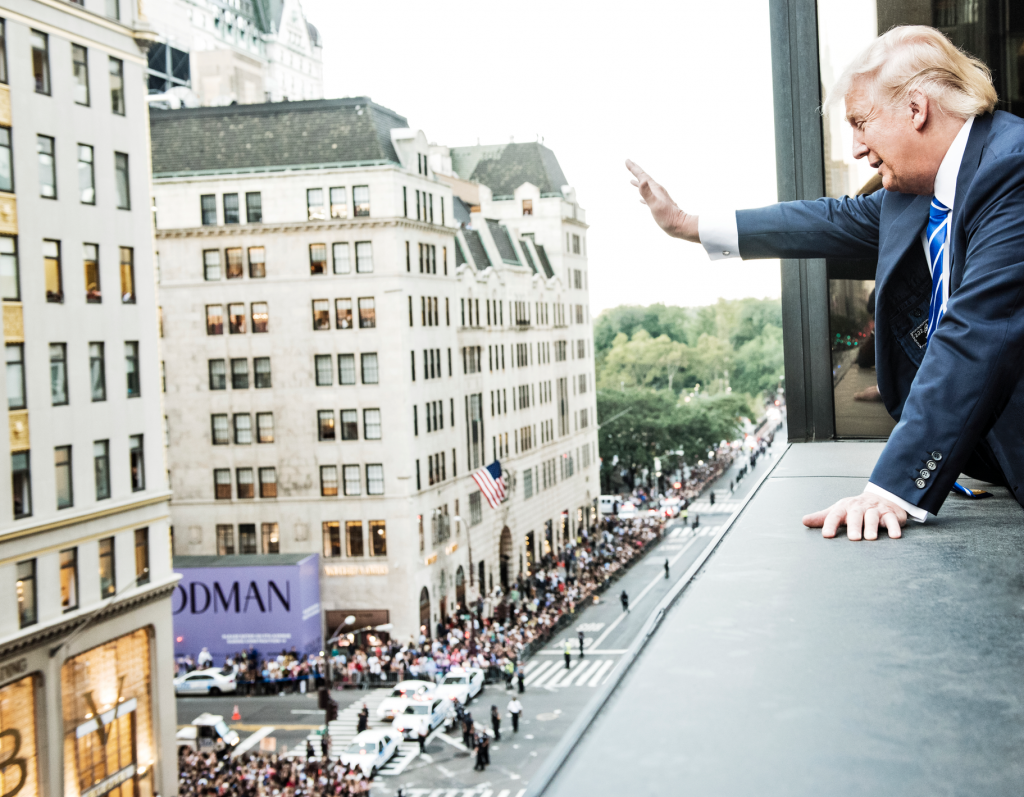Donald Trump has often exaggerated, embellished and even lied about his success and his fortune over the years. Despite being richer than ever, the president still can’t resist hyping himself up, as his recent complaint against The New York Times shows.
Late Monday, Trump filed a $15 billion defamation lawsuit against the Times, Penguin Random House and several of the newspaper’s top writers. The complaint cited a book and three articles that his legal team says damage his business and celebrity image, and alleged that the writers manipulated facts to fit a “desired narrative.”
Trump has his own long history of writing his own desired narrative, as his decades-long relationship with Forbes shows. In 1982, he appeared on the first-ever Forbes 400 list, with a $200 million fortune shared with his father, Fred Trump. “Donald,” we wrote, “claims $500 million.” Never mind the fact that, as later reported by a former Forbes writer, Trump owned little of the family real estate empire and only his father should have made the list. By 2015, when Forbes pegged then-candidate Trump’s wealth at $4.5 billion, he insisted he was worth over $10 billion. Now, after ten years in politics, Trump seems to think he’s managed to grow his fortune by at least 10x.
A federal judge dismissed the case on Friday, writing that Trump’s complaint was far too long and far too self-serving. “As every lawyer knows (or is presumed to know), a complaint is not a public forum for vituperation and invective,” wrote U.S. District Judge Steven Merryday. “A complaint is not a megaphone for public relations or a podium for a passionate oration at a political rally or the functional equivalent of the Hyde Park Speakers’ Corner.” Trump’s team now has 28 days to refile something much shorter and to the point.
Trump may want to leave out some of his more outlandish claims, not about The New York Times reporting but what he says about himself. The biggest whopper is his “one-of-a-kind” brand Trump lawyers claim is worth more than $100 billion, citing not just his current portfolio of buildings or his Trump memecoins or his Trump hats and towels, but several buildings he built long ago or owns only a small investment in, plus his cameos in Home Alone 2, The Fresh Prince of Bel-Air and The Apprentice, which his team claim “marks the cultural magnitude of President Trump’s singular brilliance.”
No doubt Trump’s brand is worth a lot, and Forbes takes it into account in our $7.3 billion estimate of his net worth in several ways. We value the president’s business that licenses the Trump brand to real estate developments, golf courses and other projects at $500 million. We value his $2 billion stake in Truth Social parent company Trump Media & Technology Group—itself more a measure of Trump’s popularity than a billion-dollar business. And we value Trump’s collection of cryptocurrencies, an even clearer bet on Trump’s name value: $338 million from World Liberty Financial and $709 from his memecoins. Add it all up, and it totals more than $3 billion. These represent the value of Trump’s stake in these brand businesses. But even if one were to credit Trump for the full value of these ventures—including not just what he owns, but the entire market capitalizations of Truth Social and the memecoins, it would run maybe a third of the$100 billion Trump claims.
Trump’s now-dismissed filing also lists more than a dozen properties that Trump and the Trump Organization allegedly “own and operate” as further proof of his $100 billion brand. Many of these are worth much less than Trump claims; some of them he doesn’t even own or operate at all.
There’s Mar-a-Lago, the Winter White House, which Trump has turned into one of the most iconic homes in America. Trump says it’s worth at least $1.8 billion. Last year, he paid around $700,000 in property taxes based on an assessed value of $37 million, according to the Palm Beach County Property Appraiser. Yes, that’s too low, as appraisals often are, especially for people hoping to keep taxes low. But based on valuation experts who know the Palm Beach market well, Forbes puts the property, which Trump says he bought for $10 million in 1985, at about $500 million before subtracting debt—a huge sum, but still less than a third of what Trump claims.
He also cites 1290 Avenue of the Americas—a Manhattan skyscraper that he does not, in fact, operate (his partner, publicly traded Vornado Realty Trust, does). Trump owns a passive 30% stake (which he once unsuccessfully sued to get out of) that gives him no control over the building, which does not bear his brand. During Trump’s first term, Forbes asked tenants if they knew Trump was an investor; multiple did not.
Other examples Trump cited to support his brand value? Residential towers like 200, 220 and 240 Riverside Boulevard, which Trump does not own and which actually removed the Trump brand after his move into politics.
In another case, Trump lists the same property twice, inflating the size of his real estate portfolio: “The Trump Building” and 40 Wall Street are the same building. Trump operates the lower Manhattan tower but he does own the ground underneath it. He has a leasehold giving him the right to run the place for three more decades. A German shipping family has long owned the dirt the skyscraper sits on; Trump pays them annual rent.
Also among the list of property Trump claims to “own and operate”: Buildings like Trump World Tower, where Trump essentially only owns the commercial space and a single, 2,800-square-foot condo unit, and the Grand Hyatt Hotel, which Trump helped develop in the late 1970s alongside the family of Illinois governor J.B. Pritzker, which bought out Trump’s stake in 1996, nearly three decades ago.

